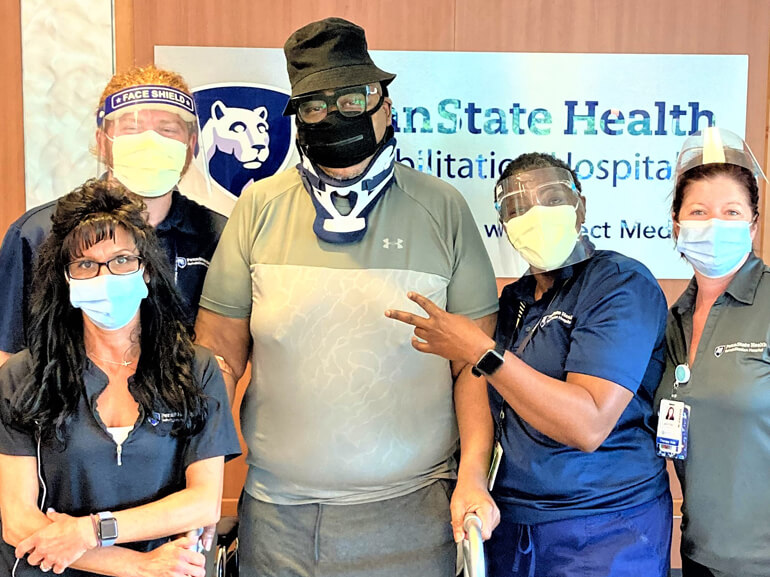Nate's story

On Mother’s Day, Nate Brabham, 55, and his girlfriend were on the way to her mother’s grave to place a bouquet of flowers, when suddenly their lives were turned upside down. While waiting to make a left turn, they were struck by another vehicle. Stunned, but conscious, Nate realized he was unable to move any of his extremities. He had suffered a spinal cord injury, as well as a hematoma from his first to fourth vertebrae. The catastrophic injury left him completely paralyzed for the first week, then slowly his legs started moving. Then the feeling in his left arm came back. Unfortunately, he still had almost no movement in his right upper extremity.
In the past, Nate had suffered from diabetes complications, heart issues and neuropathy, but he had never faced anything this debilitating. A self-proclaimed homebody, one of Nate’s favorite things is to cook. His injuries left him wondering if he would ever be able to use his right arm again. He was hopeful that with the support of his girlfriend and family, he would meet his goals of walking and regaining his independence with everyday activities, especially cooking.
While still in the acute care hospital, Nate slowly regained some movement in his right hand. His care team recommended he transfer to an inpatient rehabilitation hospital to continue recovery. He chose Penn State Health Rehabilitation Hospital. From the moment he arrived, Nate shared that he knew he was in the right place and felt determined to overcome his injury.
In physical therapy, Nate focused on walking again. Initially, he was unable to stand or transfer without a two-person assist. The team had him work on transferring from one surface to another and he quickly progressed to standing. Nate and his team then focused on gaining leg strength by using a stationary bike with electrical stimulation that “wakes up” the muscles. Nate then started to take his first steps, flanked by two therapists. As he got stronger, he advanced to using a walker, then a rolling walker. However, Nate was not content with being independent using any walker. His ultimate goal was to walk on his own and that is where he focused his sights.
"Nate the Great," as his occupational therapists called him, was motivated to become independent in daily living activities. During his first therapy session, Nate was unable to feed himself or push his call bell. His occupational sessions focused on practicing self-care tasks, using adaptive equipment and learning new ways to gradually increase his independence. The team quickly learned that Nate was resourceful in finding ways to regain strength and use of his arms and hands. One day a therapist walked into the room and found candy wrappers all over the place. When they asked him where the candy came from, Nate just chuckled and said, "I have been practicing my fine motor skills."
Although his therapists challenged Nate during his therapy sessions, they credit his continuous hard work and dedication outside of regular therapy hours for making all the difference in his recovery.
After four weeks, Nate was ready to return home. Prior to discharge, he was able to walk without an assistive device and had a huge smile on his face the whole time. He had also become fully independent with daily living activities, and he was excited to get back in the kitchen.
When asked to describe his rehabilitation experience in three words, he replied “FAN-TAS-TIC!” Nate looked forward to getting back to his normal life and couldn’t wait to eat some crab legs.